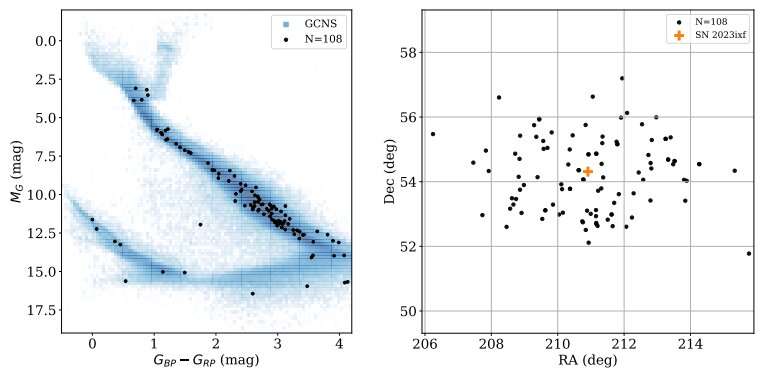June 14, 2023 report
This article has been reviewed according to Science X's and . have highlighted the following attributes while ensuring the content's credibility:
fact-checked
preprint
trusted source
proofread
New nearby supernova could be used by aliens to get our attention

A team of astronomers from the University of Washington, the SETI Institute, Yale University and Smith College is searching the vicinity of a new supernova in the spiral arms of the Pinwheel Galaxy hoping to find a signal from an alien civilization. In their paper posted on the arXiv preprint server, the research team suggests that because of its brightness and proximity, if aliens live in the vicinity, they might use it as a signal to get our attention.
Called SN 2023ixf, the supernova was first spotted by Japanese astronomers Koichi Itagak on the May 19. The Pinwheel Galaxy lies in the same direction from Earth as Ursa Major and the supernova exploding in one of its arms represents one of the closest to be seen from Earth in decades.
The supernova is approximately 21 million light years away—the research team suggests that if any advanced alien civilizations exist anywhere near the supernova, they may use the explosion as a sort of signal. The idea is that if the explosion causes us to look that way, the nearby civilization could send a signal of some sort, figuring we might see it while observing the supernova.
The supernova is Type II, which means that it was formerly a star at least eight times the size of the sun. Light from such an explosion, the team notes, can remain visible anywhere from several months to a few years. The researchers are using what they describe as a "SETI ellipsoid," an egg-shaped zone of space around the area where the supernova exploded, to look for alien signals. The shape has been determined by the time frame involved, when both the aliens and researchers on Earth would be able to see the light from the explosion. The zone includes approximately 100 stars. The team is studying data from both the Allen Telescope Array and the Robert C. Byrd Green Bank Telescope.
The team plans to study data surrounding the supernova once a month over the next several months. They acknowledge that the likelihood of finding an alien signal is remote, but suggest not trying would be regrettable if a signal came and nobody here on Earth was listening.
More information: James R. A. Davenport et al, Real-Time Technosignature Strategies with SN 2023ixf, arXiv (2023).
Journal information: arXiv
© 2023 Science X Network




















